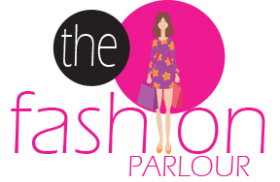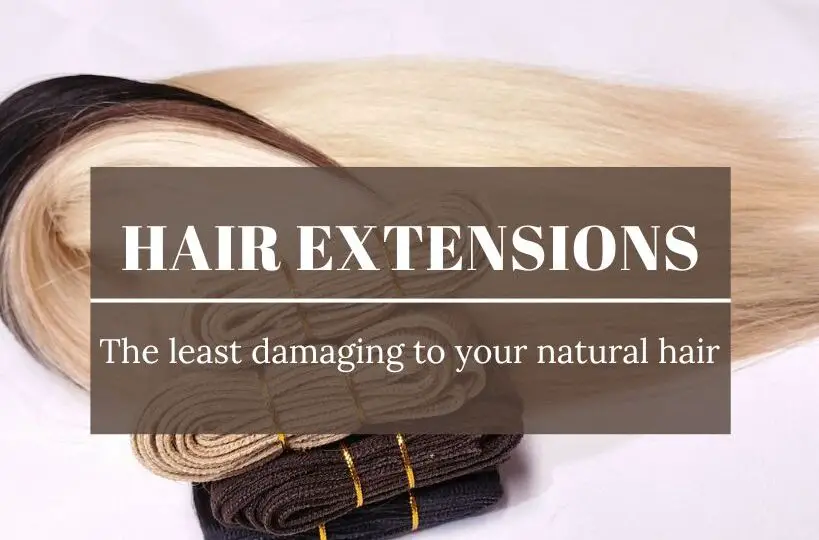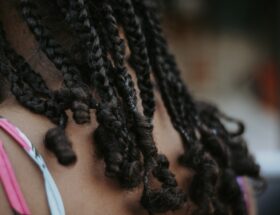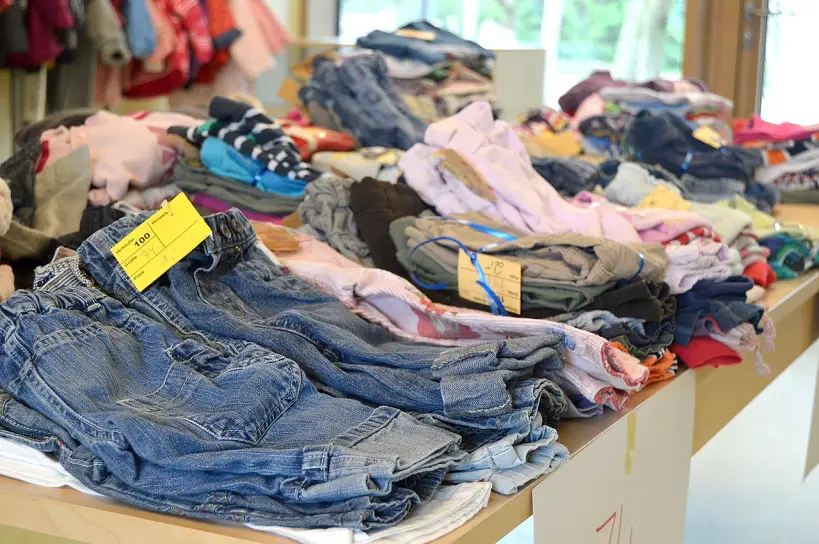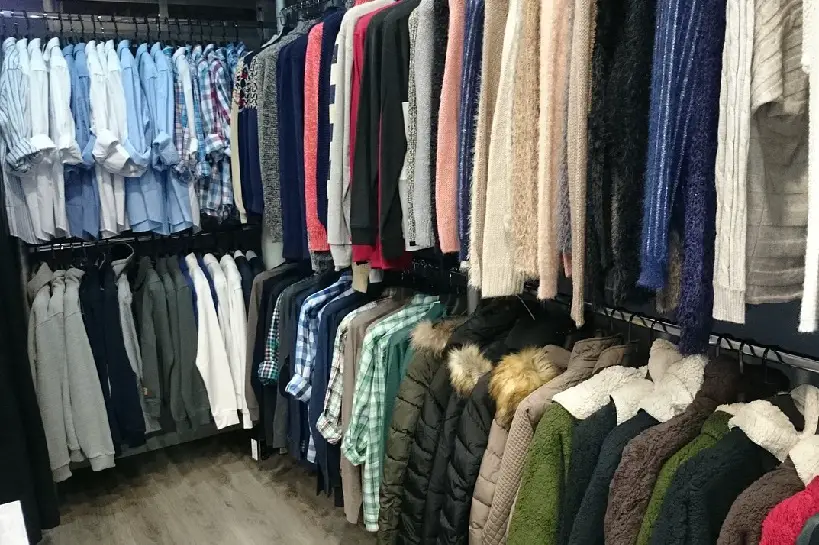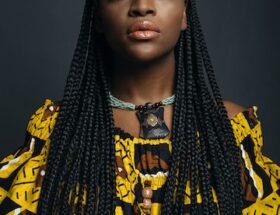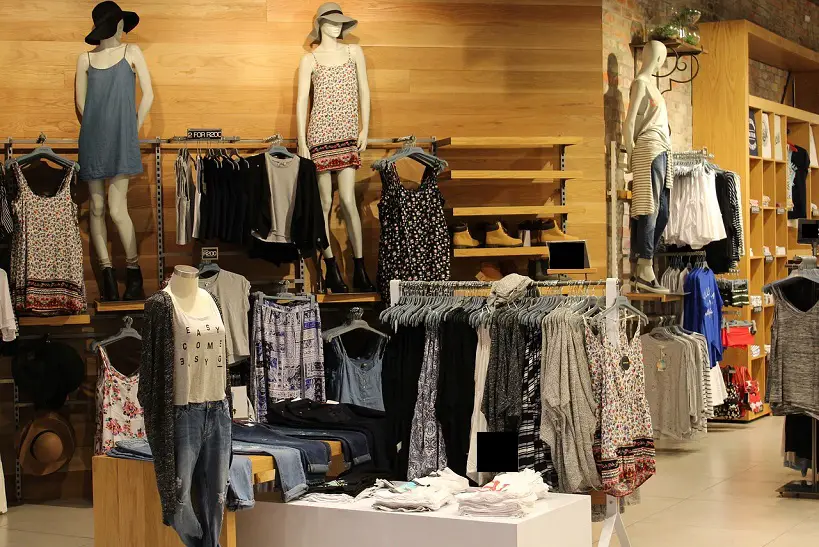Hair extensions look so good, but even as you ask your stylist to add some to your hair, you’re thinking about the damage. For that reason, the question in your mind right now is which hair extensions are least damaging and do they have an easy installation process that you can attempt on your own.
Clip-ins are the least damaging hair extensions because they aren’t sewn or glued into your natural hair.
In this article, we talk about the different types of hair extensions available. Further, we’ll mention their advantages and disadvantages to understand why clip-ins are considered the least damaging.
Consequently, you’ll be ready to make your next purchase and select hair extensions that suit your needs while minimizing potential harm to your natural hair. Wouldn’t you like that? Let’s get started!
Types of Hair Extensions
Clip-in Hair Extensions
I love how easy they are to install and remove. As such, they have unmatched versatility. Another advantage that’d have you getting clip-ins in all hair colors and lengths is that you don’t need heat styling or chemicals to install them.
I know you’ll love this other advantage even more. The fact is clip-ins are cost-effective as you can reuse them multiple times.
Now onto the not-so-good features of clip-ins.
Disadvantages
- When you install or remove them haphazardly, they may cause hair breakage.
- They can feel heavy or uncomfortable when worn for extended periods. Thus, there’s a tedious daily removal and installation process.
- They have a limited lifespan compared to the more permanent options below.
Tape-in Hair Extensions
Like clip-ins, the installation process is a breeze. In addition, tape-ins are lightweight and give you an admirable, seamless, natural look. You can reuse tape-ins, so it’s cost-effective to get some.
HOWEVER!
Disadvantages
- You maintain them every 6-8 weeks to keep them in good shape for reapplication.
- Unlike clip-ins, they use adhesive, which may cause scalp irritation in some individuals.
- They require expert installation to avoid damage to natural hair, so their installation isn’t something to try as a DIY.
See how to install a tape-in.
Micro Ring/Loop Hair Extensions
The installation is as natural-hair friendly as with clip-ins, as they don’t require heat or adhesive. On top of that, you can reuse these extensions, and there are so many ways to customize them into a unique hairstyle.
Disadvantages
- They require expert installation, so a DIY is out unless you’re a hairstylist.
- You can feel individual rings when you run your palm through your scalp.
- They have an arduous maintenance process to prevent tangles and keep them looking natural.
Fusion/Ultra Bonded Hair Extensions
I like that they’re long-lasting because who wants to have extensions and keep doing their hair? Another plus is the sheer number of ways to customize the look depending on your hair texture and color, as they suit all hair types.
Disadvantages
- They require heat and bonding agents, which may cause damage.
- The removal process can be time-consuming and may result in hair breakage.
- Fusion extensions are expensive compared to other options due to the labor-intensive installation.
Weave/Sew-in Hair Extensions
They create long-lasting hairstyles and serve as protective hairstyles for thick or coarse hair types. Another reason weaves have been here longer is the versatile styling options and range of weave lengths, colors, and textures.
Disadvantages
- Weaves require tight braiding of natural hair, which can lead to tension and potential hair loss.
- Sew-ins and weaves are laborious to maintain and keep clean because they cover the scalp, which can cause product buildup.
- Weaves may feel heavy.
How Can You Reduce Hair Damage from Hair Extensions?
I love how hair extensions give a longer, fuller, and more voluminous hairstyle. It’s why you can find more hair extension brands in the market than years ago, don’t you agree? But with this new trend comes a higher risk of hair damage.
Hair extensions damage natural hair and your scalp because of the process before, during installation, and aftercare of the new hairstyle. For instance, you start with heat to straighten your hair for braiding, then sew in the extensions. There’s also the obligatory daily combing and brushing to detangle and maintain your hair extension. You can imagine the damage this entire process can do to your edges, especially when you wear your hair extensions for an extended period.
Hair extensions, when installed or maintained improperly, can lead to various types of damage. Some common issues you may experience include hair breakage, traction alopecia, scalp irritation, and excessive hair shedding.
As you shop for a hair extension, below are some things that may reduce hair damage.
Simple Extension Installation Technique
You know it’s a great choice if the installation doesn’t involve heat and harsh chemicals. Also, there’s less tension on the scalp. For example, clip-in or tape-in extensions are known for their ease of use and gentle installation, which reduces the risk of harm.
Extension Quality
High-quality hair extensions, whether made from human hair or synthetic fibers, are less likely to cause damage. They are lightweight, durable, and blend seamlessly with natural hair, ensuring a lower breakage or scalp irritation.
Hair Care
You can reduce hair damage while using hair extensions through hair care. For instance, when you install a sew-in, brush it regularly to eliminate tangles that may cause you to pull your braided hair. Also, install extensions on clean, hydrated hair.
Conclusion
Now that you have facts about various hair extensions, you agree that clip-ins cause less damage to your hair because they don’t use glue or other permanent installation product. On top of that, you don’t braid your natural hair to install clip-ins as with weaves.
However, you also require regular hair care to hydrate your natural hair.
